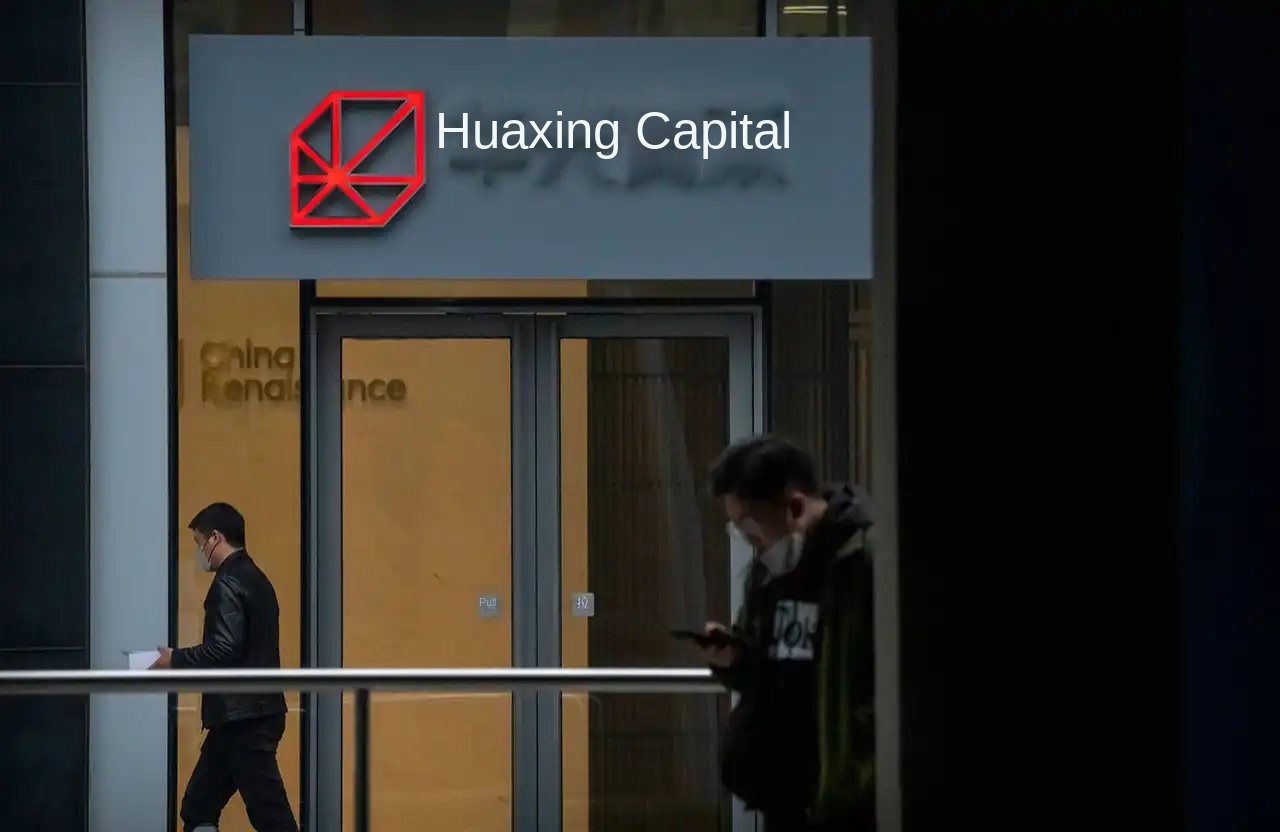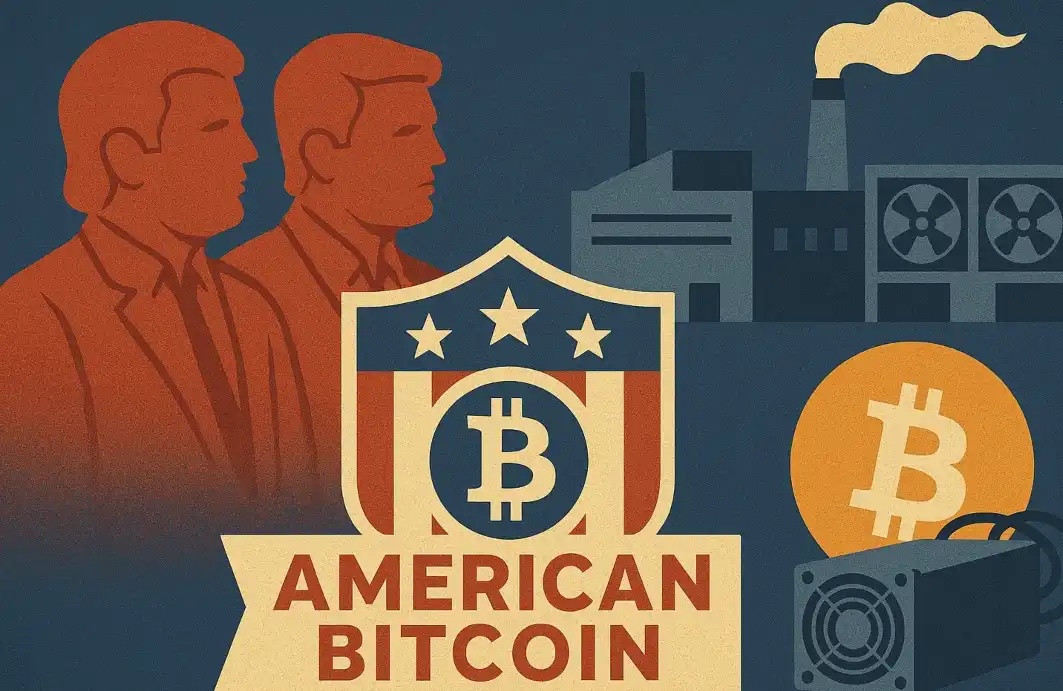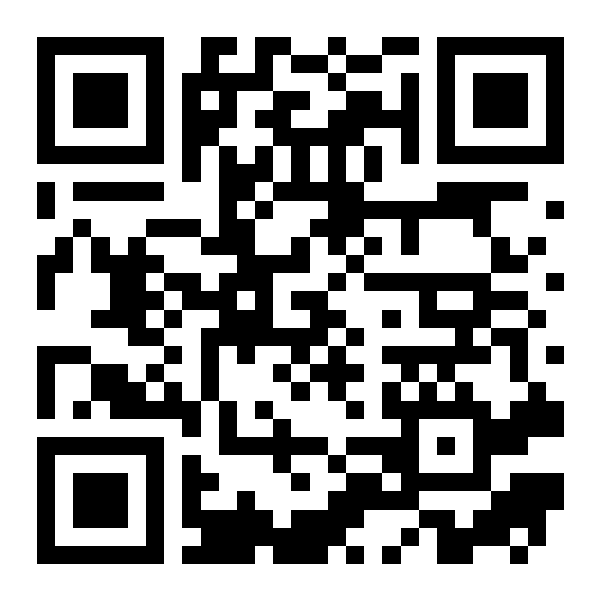From Grassroots to $600 Billion Valuation, the Robinhood Saga
Original Article Title: "From Grassroots to $600 Billion Market Cap, the Robinhood Saga"
Original Article Authors: Yanz, Liam, Deep Techflow
"A good finance guy, 'the Robin Hood of finance'," a friend once described Tenev (Vladimir Tenev) this way.
Later on, it was this nickname that became the name of a company that would change the finance industry. However, this was not the beginning of the whole story.
Tenev (Vladimir Tenev) and Bhatt (Baiju Bhatt), the two founders with backgrounds in mathematics and physics from Stanford University, met during a summer research project in their undergraduate years at Stanford University.
Neither of them anticipated that they would be deeply intertwined with a generation of retail investors. They thought they had chosen retail investors, but in reality, it was the era that chose them.

During their time at Stanford, Tenev began to question the prospects of mathematical research. He grew tired of the academic life where "spending years studying a problem might end up yielding nothing," and he couldn't understand his doctoral classmates' obsession with working hard for meager pay. It was this reflection on the traditional path that quietly planted the seed of entrepreneurship in him.
In the fall of 2011, at the peak of the "Occupy Wall Street" movement, public dissatisfaction with the financial industry reached its zenith. In Zuccotti Park in New York, protesters' tents were scattered all over, and even Tenev and Bhatt in San Francisco could see the aftermath from their office window.
That same year, they founded a company in New York called Chronos Research, developing high-frequency trading software for financial institutions.
However, they soon realized that traditional brokerages, with high commissions and complex trading rules, were keeping ordinary investors out of the financial markets. This made them ponder: Can the same technology that serves institutions also serve retail investors?
At that time, emerging mobile internet companies like Uber, Instagram, and Foursquare were flourishing, and products designed for mobile devices began to lead the trend. In contrast, the financial industry, with low-cost brokerages like E-Trade, was still struggling to adapt to mobile devices.
Tenev and Bhatt decided to ride this wave of technology and consumer trends, transforming Chronos into a free stock trading platform for millennials and applied for a broker-dealer license.
The Millennial Generation, the Internet, Free Trades—Robinhood brought together the three most disruptive elements of this era.
Little did they know at the time that this decision would mark the beginning of an extraordinary decade for Robinhood.
Hunting the Millennial Generation
Robinhood set its sights on a blue ocean market that was overlooked by traditional brokerages at the time—the Millennial generation.
According to a 2018 survey conducted by the traditional financial planning company Charles Schwab, 31% of investors compare fees when choosing a brokerage. The Millennial generation, in particular, is sensitive to "zero fees," with over half of the respondents stating that they would switch to a more price-competitive platform because of this.
Zero-commission trading emerged in such a context. At that time, traditional brokerages typically charged $8 to $10 per trade, but Robinhood completely waived this fee and had no minimum account balance requirement. The model of trading with just one dollar quickly attracted a large number of novice investors. Coupled with a simple and intuitive interface design that even had a "game-like" feel, Robinhood successfully increased user trading activity, even cultivating a group of young users addicted to trading.
This revolution in fee structure eventually forced an industry-wide transformation. In October 2019, Fidelity, Charles Schwab, and E-Trade successively announced that they would reduce their trading commissions to zero. Robinhood became the "first mover" in carrying the flag of zero-commission trading.

Source: East Securities
Adopting Google's Material Design style introduced in 2014, Robinhood's gamified interface design even won an Apple Design Award, making it the first fintech company to receive such an award.
While this was a part of their success, it was not the most crucial aspect.
In an interview, Tenev described the company's philosophy by paraphrasing a line from the movie "Wall Street" spoken by the character Gordon Gekko: "The most important commodity that I have is information."
This sentence captures the core of Robinhood's business model — Payment for Order Flow (PFOF).
Like many internet platforms, behind Robinhood's seemingly "free" service lies a higher cost.
By selling users' trade orders flow to market makers, Robinhood profits, but users may not necessarily execute trades at the best market price, mistakenly thinking they are benefiting from zero-commission trades.
In simple terms, when a user places an order on Robinhood, these orders are not directly sent to the public market (such as NASDAQ or NYSE) for execution but are first routed to market makers (such as Citadel Securities) that Robinhood partners with. These market makers match trades with a very small price difference (usually a one-thousandth of a cent spread) to profit from it. In return, market makers pay Robinhood a "payment for order flow," which is essentially a kickback.
In other words, Robinhood's free trades actually make money for the platform in "invisible" ways, although CEO Vlad Tenev has repeatedly claimed that PFOF is not a profit source for Robinhood. The reality is that in 2020, 75% of Robinhood's revenue came from trading-related activities, which increased to 80.5% in the first quarter of 2021. Even though the percentage has slightly decreased in recent years, PFOF remains a significant pillar of Robinhood's revenue.

New York University marketing professor Adam Alter stated in an interview: "For a company like Robinhood, merely having users is not enough. You have to get them to keep tapping on the 'buy' or 'sell' button, reducing all the barriers people might have when making financial decisions."
Sometimes, this extreme "zero-barrier" experience brings not only convenience but also potential risks.
In March 2020, a 20-year-old American college student named Kearns, after engaging in options trading on Robinhood, saw his account showing a loss of up to $730,000 — far exceeding his $16,000 initial investment. This young man ultimately chose to take his own life, leaving a note to his family saying: "If you are reading this letter, I am no longer alive. Why can a 20-year-old with no income have access to leverage of nearly $1 million?"
Robinhood perfectly hit the psychological buttons of young retail investors: low barriers to entry, gamification, social features, and reaped the rewards of this design. As of March 2025, the average age of Robinhood users remained stable at around 35 years old.
But all that fate bestows comes with a price tag, and Robinhood is no exception.
Robinhood: Rob from the Rich, Give to the Poor?
From 2015 to 2021, Robinhood saw a 75% growth in registered users on its platform.
Especially in 2020, with the COVID-19 pandemic, U.S. government stimulus policies, and a surge in retail investing enthusiasm, both the platform's user base and trading volume skyrocketed, with assets under custody briefly surpassing $135 billion.

As the user count swelled, controversies followed.
By the end of 2020, the Massachusetts securities regulator accused Robinhood of using "gamification" to attract inexperienced investors but failing to provide necessary risk controls during market volatility. Subsequently, the U.S. Securities and Exchange Commission (SEC) initiated an investigation into Robinhood, alleging that it did not secure the best trade prices for its users.
Eventually, Robinhood opted to pay $65 million to settle with the SEC. The SEC bluntly stated that even with commission-free trading, users collectively lost $34.1 million due to price disparities. Robinhood denied the allegations, but this controversy was only the beginning.
What truly plunged Robinhood into a whirlwind of public opinion was the early 2021 GameStop event.
This electronic game retailer, which embodied a generation of American childhood memories, found itself in distress amid the pandemic and became a target for institutional investors to heavily short. However, tens of thousands of retail investors were unwilling to stand by and watch GameStop crumble under Wall Street's pressure. They rallied on the Reddit forum WallStreetBets, utilizing trading platforms like Robinhood to collectively buy, sparking a "retail investor short squeeze" battle.
GameStop's stock price surged from $19.95 on January 12 to $483 on January 28, a more than 2300% increase. A "grassroots Wall Street revolt" financial frenzy that shook the traditional financial system.
However, what seemed like a victory for retail investors quickly turned into Robinhood's "darkest hour."
The financial infrastructure at that time was simply unable to handle the sudden surge in trading activity. According to the settlement rules at the time, stock trades required T+2 days to settle, and brokers had to set aside risk collateral in advance for their clients' trades. The surge in trading volume caused Robinhood's required collateral to the clearinghouses to skyrocket.
On the morning of January 28, Tenev was awakened by his wife to the news that Robinhood had received a notification from the National Securities Clearing Corporation (NSCC) demanding a risk collateral payment of up to $3.7 billion, pushing Robinhood's funding to its limit in an instant.
He spent the night contacting venture capitalists, scrambling for funding to ensure the platform was not brought down by systemic risk. Meanwhile, Robinhood was forced to take extreme measures: restricting the buying, and allowing only selling, of "meme stocks" like GameStop and AMC.
This decision immediately sparked public outrage.
Millions of retail investors felt that Robinhood had betrayed its commitment to "democratizing finance," criticizing it for bowing to Wall Street forces. There were even conspiracy theories accusing Robinhood of colluding with Citadel Securities, its largest order flow partner, to manipulate the market to protect hedge fund interests.
Online harassment, death threats, and negative reviews flooded in. Robinhood suddenly went from being the "friend of retail investors" to a target of public ire, leading Tenev and his family to go into hiding and hire private security.
On January 29, Robinhood announced it had secured $1 billion in emergency funding to maintain operations, followed by several rounds of fundraising, eventually raising a total of $3.4 billion. At the same time, members of Congress, celebrities, and public opinion relentlessly pursued the company.
On February 18, Tenev was summoned to testify before the U.S. Congress, facing questioning from lawmakers, he insisted that Robinhood's decision was due to settlement pressure and was not related to market manipulation.
Nevertheless, the doubts never subsided. The Financial Industry Regulatory Authority (FINRA) launched a thorough investigation into Robinhood, resulting in the largest single fine in history—$70 million, including a $57 million penalty and $13 million in customer restitution.
The GameStop event became a turning point in Robinhood's history.
This financial storm severely damaged Robinhood's image as the "retail investor champion," with both brand reputation and user trust suffering significant blows. At one point, Robinhood became a "survivor in the crossfire," facing discontent from retail investors and increased regulatory scrutiny.
However, this event also prompted U.S. regulatory agencies to embark on reforming the clearing system, pushing to shorten the settlement cycle from T+2 to T+1, bringing about lasting effects on the entire financial industry.
Following this crisis, Robinhood proceeded with its long-planned IPO.
On July 29, 2021, Robinhood debuted on the Nasdaq with the ticker symbol "HOOD," with an IPO price set at $38, valuing the company at approximately $32 billion.
However, the IPO did not deliver the expected capital feast for Robinhood. On its first trading day, the stock price opened lower, ultimately closing at $34.82, an 8% drop from the IPO price. While there was a brief recovery driven by retail investor enthusiasm and institutional buying (such as ARK Invest), the overall trend remained under pressure.
The divide between Wall Street and the market was evident—whether to be optimistic about its role as the "financial gateway of the retail investor era" or concerned about its controversial business model and future regulatory risks.
Robinhood found itself at a crossroads of trust and skepticism, officially entering the reality test of the capital market.
Yet, at that time, few noticed a signal hidden in the fine print of the prospectus—a word that appeared 318 times in Robinhood's submitted S-1 document: "Crypto."
An inadvertently high frequency of occurrence, yet behind it was a declaration of a strategic shift.
Crypto was precisely the new narrative quietly unveiled by Robinhood.
Colliding with Crypto
As early as 2018, Robinhood silently tested the waters of the cryptocurrency business, pioneering Bitcoin and Ethereum trading services. At that time, this move looked more like a supplement to the product line and was far from a core strategy.
However, market enthusiasm quickly changed everything.
In 2021, The New Yorker described Robinhood as follows: "A zero-commission platform offering both stocks and cryptocurrency trading, committed to being Wall Street's enlightened version, with a mission to 'achieve financial democratization for all.'"
The growth of data also confirms the potential of this track:
· In the fourth quarter of 2020, about 1.7 million users traded cryptocurrency on the Robinhood platform. By the first quarter of 2021, this number had soared to 9.5 million, representing a more than 5x increase in a single quarter.
· In the first quarter of 2020, cryptocurrency trading revenue accounted for approximately 4% of the company's total transaction-based revenue. By the first quarter of 2021, this figure surged to 17%, and further skyrocketed to 41% in the second quarter.
· When it started in 2019, Robinhood's cryptocurrency asset size was only $4.15 million. By the end of 2020, this number had exploded to $35.27 million, a growth of over 750%. Moving into the first quarter of 2021, the custody size surged to $1.16 billion, marking a year-over-year growth of over 2,300%.

At this moment, cryptocurrency has evolved from a fringe product to one of Robinhood's revenue pillars, clearly positioned as a growth engine. As they wrote in their filing: "We believe that cryptocurrency trading has opened up new opportunities for our long-term growth."
But what exactly happened to drive the explosive growth of Robinhood's cryptocurrency business in just a couple of quarters?
The answer also appears in the S-1 filing. Remember the 2021 craze around Dogecoin? Robinhood was a key driver of the Dogecoin wave.
The S-1 document clearly states: "For the three months ended June 30, 2021, 62% of cryptocurrency transaction-based revenue came from Dogecoin, compared to 34% in the previous quarter."
To meet user demand, Robinhood announced plans in August 2021 to launch cryptocurrency deposit and withdrawal capabilities, allowing users to freely transfer assets such as Bitcoin, Ethereum, and Dogecoin in and out of wallets.
Six months later, at the LA Blockchain Summit, Robinhood officially unveiled the multi-chain-supported Robinhood Wallet beta version, which was launched to iOS users in September 2022 and set to be fully rolled out in 2023.
This move marks the beginning of Robinhood's official transition from a "centralized brokerage" to a "digital asset platform."
However, just as Robinhood was accelerating its transformation with the help of the crypto boom, a legendary figure at the time set his sights on it — Sam Bankman-Fried (SBF).
SBF, the prominent founder and CEO of FTX at the time, was known for his aggressive expansion strategies and disruptive ambitions in the financial industry.
In May 2022, SBF quietly acquired around 7.6% of Robinhood's shares through his holding company Emergent Fidelity Technologies, a stake worth approximately $6.48 billion.
After the news was made public, Robinhood's stock price surged over 30% in after-hours trading.
In a 13D filing submitted to the U.S. Securities and Exchange Commission (SEC), SBF stated that his purchase of Robinhood shares was because he "believed it to be an attractive investment," and he pledged that he currently had no plans to seek control or intervene in management. However, the filing also retained the statement that he "may adjust his ownership intentions based on future circumstances," leaving ample room for maneuvering.

In reality, SBF's move is not easily interpreted as a purely financial investment.
At that time, FTX was actively expanding into the U.S. compliant market, attempting to move away from being a "purely crypto exchange" and penetrate traditional financial and securities services. Robinhood, with its large retail user base and regulatory qualifications, was the ideal bridge for this endeavor.
There were widespread market speculations that SBF was intending to push for deeper collaboration with Robinhood and even attempt a merger. Although SBF publicly denied these rumors, he also did not rule out the possibility in the future.
However, SBF's strategic move did not lead to the envisioned "win-win" scenario.
By the end of 2022, FTX faced a massive collapse, and SBF was embroiled in allegations of fraud, money laundering, and financial crimes. In January 2023, the U.S. Department of Justice officially seized SBF's approximately 56 million shares of Robinhood stock held through his holding company, with a then-market value of around $4.65 billion.
This once symbolic stake in the "crypto financial alliance" ultimately became a hot legal piece of evidence.
Until September 1, 2023, Robinhood repurchased these shares from the U.S. Marshals Service (USMS) for $6.057 billion, completely resolving the potential ownership risk.
Ironically, based on Robinhood's current $86 billion market capitalization, the 7.6% stake once held by SBF, if held to this day, would now be worth around $6.5 billion, representing a more than 10x increase from the original cost.
It turns out that what SBF considered an "attractive investment" was indeed attractive.
Takeoff, Stock Price
If the GameStop incident was a baptism by fire for Robinhood, then in 2025, Robinhood officially ushered in its own moment in the sun.
All of this was foreshadowed.
In the fourth quarter of 2024, Robinhood saw record highs in various key metrics:
· Custodied assets, net deposits, Gold subscription users, revenue, net profit, adjusted EBITDA, and earnings per share all exceeded expectations;
· Quarterly revenue exceeded $10.1 billion, net profit reached $9.16 billion, Gold subscription users surpassed 2.6 million, adjusted EBITDA reached $6.13 billion...
· Cryptocurrency trading volume surged to $710 billion, crypto business revenue grew by 700% year-over-year, achieving a record quarterly revenue of $3.58 billion.
Of note, in the fourth-quarter earnings report, Robinhood's founder Tenev stated, "We see a huge opportunity in front of us because we are working to make it possible for anyone, anywhere to buy, sell, or hold any financial asset and perform any financial transaction through Robinhood."
This was perhaps a small foreshadowing.
On February 14, 2025, just two days after the release of the earnings report, Robinhood's stock price reached its first peak of 2025 at $65.28.

However, what truly ignited this skyrocketing stock price was the resonance of the global financial and crypto market.
With Trump's election and a shift in U.S. policy towards being "crypto-friendly," Robinhood's regulatory risks gradually diminished.
On February 21, 2025, the U.S. SEC Enforcement Division formally notified Robinhood Crypto, ending a year-long investigation into its crypto business, custody processes, and payment order flow, and decided not to take any enforcement action. This letter not only removed policy barriers for Robinhood's future crypto business expansion but also became a significant catalyst for the stock's breakthrough rebound.
Following that, Robinhood delivered a heavy blow.
On June 2, 2025, Robinhood officially announced the completion of its acquisition of Bitstamp, one of the world's oldest crypto exchanges, for $65 million.
Bitstamp was renamed "Bitstamp by Robinhood" and fully integrated into Robinhood Legend and Smart Exchange Routing systems. This strategic acquisition not only brought compliance assets and global market positioning to Robinhood but also transitioned it from a retail brokerage to competing on par with Coinbase and Binance in the global crypto exchange arena.
The next day, the stock price broke $70.
If the Bitstamp acquisition was an important step for Robinhood to go global, the subsequent actions signaled Robinhood's significant entry into the Web3 capital market.
Do you remember Teneva's previous teaser? "Anyone, anytime, any financial asset, any transaction, one step further."
On June 30, 2025, Robinhood announced its official entry into the blockchain securities field, allowing European users to trade over 200 U.S. stocks and ETFs on the Arbitrum network through blockchain-based tokens, including stocks of well-known companies such as Nvidia, Apple, and Microsoft.
Furthermore, Robinhood also unveiled its in-house Layer-2 blockchain, "Robinhood Chain," development plan.
The market reacted strongly to this, with Robinhood's stock price soaring in a single day, achieving a 46% increase for the month and breaking through $100 during intraday trading on July 2, setting a new all-time high.
Although the market experienced a brief pullback after the rumor of OpenAI's equity tokenization was debunked, analysts generally believe that Robinhood has successfully transformed from a "retail brokerage" to a "fintech platform," with blockchain securities poised to become its next long-term growth engine.

As of now, Robinhood's stock price has stabilized around $100, showing a nearly 150% increase for the year, with a market capitalization surpassing $88 billion (approximately 630 billion RMB), far exceeding expectations from its IPO year.
From grassroots to today, the $86.7 billion Robinhood is no longer what it used to be. From being the "target of the masses" in the 2021 GameStop storm to the trendsetter in the 2025 wave of financial and crypto integration, Robinhood has not only experienced the ultimate test of the capital markets but has also completed its accelerated restructuring in five years.
If history chose Robinhood back in the day, then at this moment, Robinhood has finally become the player capable of shaping history.
Today, TeNev may probably tell his college self, who worried about math as a career, "You spent several years exploring a specific problem, and you finally have something to show for it."
Welcome to join the official BlockBeats community:
Telegram Subscription Group: https://t.me/theblockbeats
Telegram Discussion Group: https://t.me/BlockBeats_App
Official Twitter Account: https://twitter.com/BlockBeatsAsia
 Forum
Forum

 Finance
Finance
 Specials
Specials
 On-chain Eco
On-chain Eco
 Entry
Entry
 Podcasts
Podcasts
 Activities
Activities
 OPRR
OPRR









